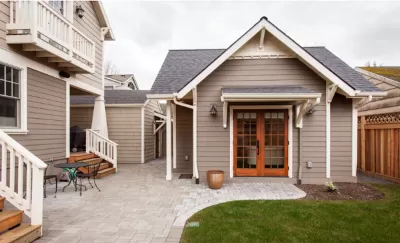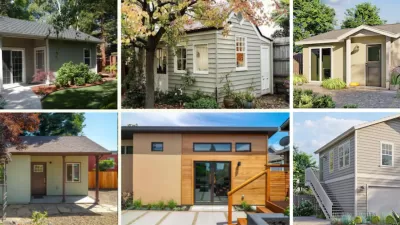Local policies and programs can encourage homeowner participation and increase the number of ADUs available as low-cost rentals.

In a report for Brookings, Jenny Schuetz and Eve Devens describe the potential of accessory dwelling units (ADUs), sometimes known as granny flats or casitas, to make a dent in the housing crisis and offer another option for affordable rental housing in residential neighborhoods.
Using Los Angeles as an example, the authors note that one of the keys to expanding ADU stock is homeowner participation. “While ADU production overall has steadily increased in recent years, it is not obvious that the typical Los Angeles homeowner wants to enter a long-term commitment to lease their ADU to low-income renters and comply with the rules governing housing subsidies.”
The authors note that the Los Angeles region offers a useful model for how ADU policies can impact affordable housing production. “In the city of Los Angeles, Los Angeles County, and Pasadena, ADUs account for over two-thirds of all housing permits between 2020 and 2022. However, no data is available on how many of these ADUs are available for rent on the open market, and how many are reserved for personal use or family members.”
The report outlines how four pilot ADU programs in the L.A. area are helping reach housing goals, each with a slightly different emphasis. “The city of Los Angeles focused particularly on matching low-income older adults with ADUs, noting that many seniors are familiar with small homes in low-density residential neighborhoods.” Meanwhile, Los Angeles County reserved ADUs for people experiencing homelessness.
Ultimately, the authors conclude, “To make ADUs a larger segment of the affordable housing market over the coming years will require both more financial support as well as substantially higher take-up rates among homeowners.”
FULL STORY: ADUs could expand the affordable housing toolkit—if local governments can work through some growing pains

Alabama: Trump Terminates Settlements for Black Communities Harmed By Raw Sewage
Trump deemed the landmark civil rights agreement “illegal DEI and environmental justice policy.”

Planetizen Federal Action Tracker
A weekly monitor of how Trump’s orders and actions are impacting planners and planning in America.

Why Should We Subsidize Public Transportation?
Many public transit agencies face financial stress due to rising costs, declining fare revenue, and declining subsidies. Transit advocates must provide a strong business case for increasing public transit funding.

Understanding Road Diets
An explainer from Momentum highlights the advantages of reducing vehicle lanes in favor of more bike, transit, and pedestrian infrastructure.

New California Law Regulates Warehouse Pollution
A new law tightens building and emissions regulations for large distribution warehouses to mitigate air pollution and traffic in surrounding communities.

Phoenix Announces Opening Date for Light Rail Extension
The South Central extension will connect South Phoenix to downtown and other major hubs starting on June 7.
Urban Design for Planners 1: Software Tools
This six-course series explores essential urban design concepts using open source software and equips planners with the tools they need to participate fully in the urban design process.
Planning for Universal Design
Learn the tools for implementing Universal Design in planning regulations.
Caltrans
Smith Gee Studio
Institute for Housing and Urban Development Studies (IHS)
City of Grandview
Harvard GSD Executive Education
Toledo-Lucas County Plan Commissions
Salt Lake City
NYU Wagner Graduate School of Public Service





























